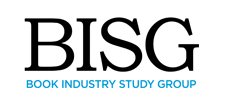BISG EPUB3 Support Grid

The Book Industry Study Group has just released a monster resource in the form of a chart comparing functionality support among the various e-reading platforms. Ostensibly created to provide a reference for ePub 3.0 support, it also lists the non-ePub compliant features of the Kindle line, as well as support for other formats such as PDF, RTF, and MS Word.
The chart is provided in the form of an Excel spreadsheet with sections for each specific platform, divided further into columns for each of their specific device and app iterations. Each of the functionality elements are provided in rows down the page, again divided into groups and subgroups, with some ninety features given in fourteen groupings. Support for each feature is signified by an X in the appropriate cell, while an O shows support for a non-ePub compliant version of the feature (i.e. for KF8 or PDFs). An unsupported feature gets a "No" or "N/A" (or an occasional note), with the remaining cells receiving question marks where information was not currently available.
While this is sure to become a go-to guide for future reference, at present there are a lot of question marks, including all five columns of the Kobo family and much of the Nook line, as well as three of the four app-only platforms listed, these being Overdrive, Azardi and BlueFire. Safari Books is the fourth, and they have almost no support for ePub3 at all. The Sony Reader didn't even get an entry. Apple, who just recently announced officially iBooks support for ePub3, fares quite well, as one might suspect. I was most surprised at how thoroughly Ingram's VitalSource e-textbook platform supports ePub3 - more so even than the IDPF's own Readium Project software (which is pretty good) - so if you create content for academic texts you're in good shape.
I did find one inaccuracy in the information regarding KF8, which is not surprising. In the listing for Orientation Lock support the grid makes a note that creators of content in KF8 must choose either landscape or portrait orientation, but as you know if you've read my KF8 tutorials from back in March this is not true. While the Kindle User's Guide lists only those two options, "orientation-lock: none" is, in fact, a valid entry, allowing the content to auto-rotate. I have tested this on both the Kindle Fire and the Kindle for Android app on my Droid Razr Maxx, and sent a note off to BISG this morning pointing it out, to which I received a kind reply. We'll see if they update it. They may be going only off the specs here, and marking only officially supported features with an X (or O in this case), although the chart states that much of the information was provided by third-party users and not the vendors themselves.
BISG's release announcement states that they plan to update the grid data monthly, so be sure to bookmark the page and check back often. The digital publishing industry is changing at a rapid pace, and a resource such as this will be helpful in attempting to navigate that landscape.

Published on June 11, 2012 17:45
No comments have been added yet.



